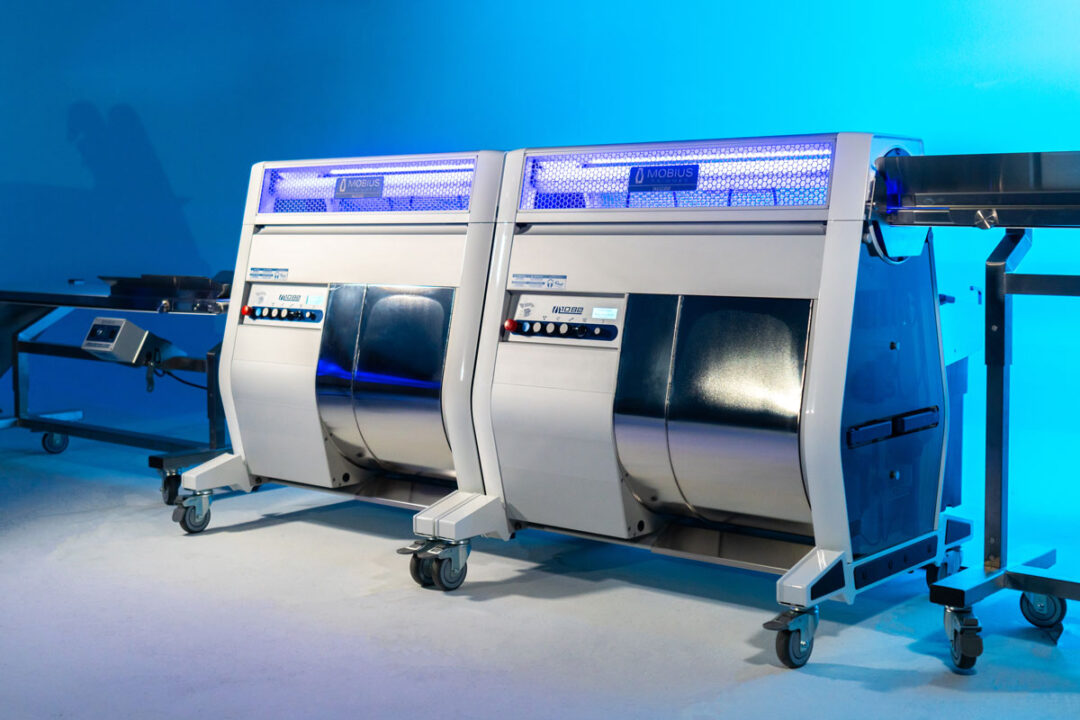How Dirty Is Your Water? Ready Research Results
During summer 2009, we collected irrigation water samples from 24 greenhouses and nurseries across 11 states in the United States as part of the Young Plant Research Center program. We evaluated physical, chemical and biological water quality and determined whether current treatment practices were maintaining water quality within recommended guidelines.
Table 1 summarizes our results for up to the five types of samples we collected in each location:
• “Source” water samples were the municipal or well supply collected at the first access point after entering the greenhouse.
• “Furthest outlet” samples were collected from a boom, emitter or hose after traveling within the irrigation plumbing the furthest distance from the “source.”
• “Bench and floor” samples were collected from ebb and flood irrigation water before treatments such as filtration were re-applied to the return water.
• “Tank” samples represented irrigation water stored in concrete-lined tanks indoors. Samples had been treated with acid, descaling chemicals, fertilizer, filtration or sanitizing agents.
• “Pond” samples were from open, outdoor catchment basins receiving runoff and return irrigation water.
Water quality has physical, chemical and biological components. When any of these factors are out of range, problems may occur with plant health or the efficient functioning of equipment.
Physical
• High suspended solids from peat or sand particles can clog equipment and are a measure of the adequacy of filtration. In our survey, suspended solids were below the EPA-recommended range of 20 mg/L for non-edible crops, except for a small number of “tank” and “furthest outlet” samples.
• The clarity of water in terms of transmission of ultraviolet (UV) light is important as to whether UV radiation would be effective to sanitize water. UV transmission was above the recommended minimum 75 percent level in all but one “source” water. However, more filtration would be needed in many of the other sample types, such as “pond” water, for UV radiation to be effective.
Chemical
• Irrigating with water containing high alkalinity will cause pH in the growing medium to rise over time, because alkalinity represents dissolved lime. Alkalinity levels in “source” water ranged from 0 to 323 mg/L CaCO3, with acid injection needed in many locations to neutralize alkalinity.
• Water pH is important in terms of solubility and activity of chemicals. Source water in more than half of the locations had pH levels above 7.5, which indicates a need to inject acid when using chemicals such as copper ionization or chlorine, in order to increase their sanitizing power.
• Electrical conductivity (EC), which is a measure of the total ion concentration, tended to be low in “source” water. This is not surprising given that all of the surveyed growers were propagating plugs or liners, which are particularly sensitive to salts. Reverse osmosis or blending of water sources would be suitable in one rooting station greenhouse that had a “source” EC level of 1.2 mS/cm.
Biological
• Total aerobic bacteria, in colony forming units per milliliter (cfu/mL), is a measure of microbial activity in the water. Bacteria count is useful to indicate biofilm (bacteria, algae and other microbes) on the inside of irrigation lines and the risk of equipment clogging. The large increase between the “source” and “furthest outlet” bacteria counts occurred mainly because of biofilm inside the irrigation lines. Counts below 10,000 cfu/mL are recommended to avoid clogging issues. Only 10 percent of the “source” samples exceeded 10,000 cfu/mL, but high levels were found in other parts of the irrigation system, especially in “pond” water. For growers spending a lot of labor unclogging emitters, a high bacteria count indicates the need for injection of a sanitizing agent.
• Most aerobic bacteria are likely to be benign or beneficial and are not plant pathogens. The higher the bacteria count, however, the higher the demand for a sanitizing agent such as chlorine to control biofilm – and the less likely the sanitizer will be effective against target pathogens such as Pythium.
Overall Sanitizing Demand
• For this measurement, we dosed the water sample with a known amount of chlorine (as bleach, which is sodium hypochlorite), and two minutes later measured free chlorine. This “chlorine demand” value represents how much sanitizing agent would be needed to oxidize contaminants in the water. The demand also represents how much chlorine would need to be injected to achieve a target-free chlorine level of 2 mg/L, which is generally recommended by plant pathologists for Pythium and Phytophthora control.
For example, with “pond” water, if the target was 2 ppm of free chlorine, an average of 3.2 + 2 mg/L = 5.2 mg/L would be needed because of organic matter, fertilizer and other material in the water. Note the high chlorine demand in the “tank” samples. This occurred in part because most of the “tank” water included ammonium fertilizer, which creates a large demand on chlorine.
For more information on this and other water quality and treatment topics, see our resources at the industry-sponsored website, WaterEducationAlliance.org.










